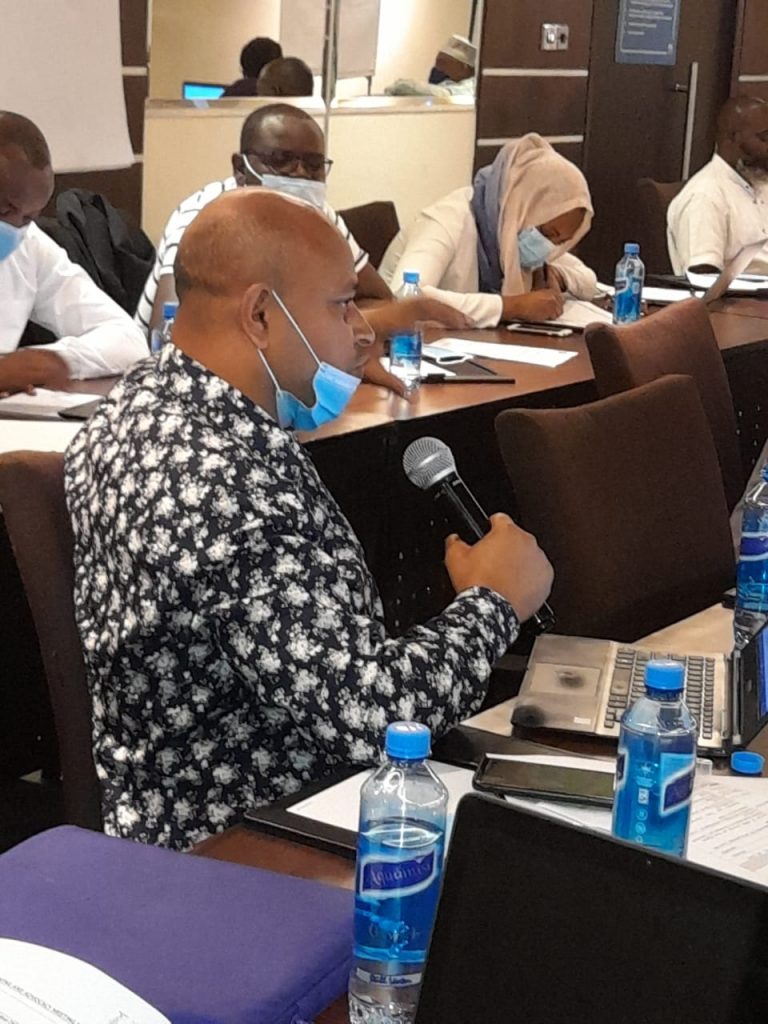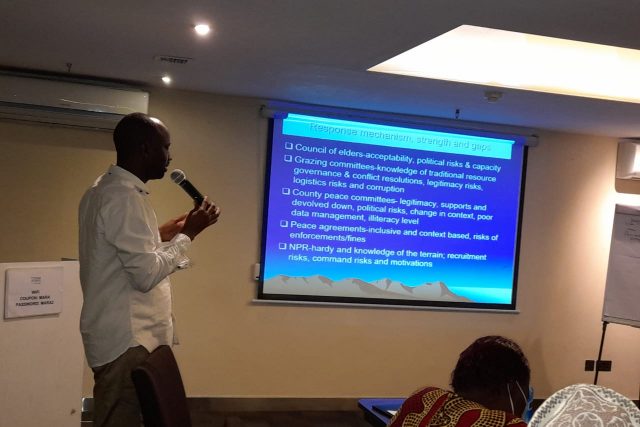By Guyo Haro Wario
This article presents the findings of conflict analysis for isiolo and marsabit counties in Kenya.
County Statistics
Isiolo
- Population 268,336.7Km
- Size: 25,625
- Key economic activity: Pastoralism’s
- Poverty: 69%
- Climate: Dry and with high temperatures
Marsabit
- Population:459,785
- Size: 66,923Km S
- Key economic activity: Pastoralisms
- Poverty:
- Climate: Dry and with high temperatures
The research conducted a research to identify existing conflicts in Isiolo and Marsabit, its dynamics, trends and impact on communities as well as development.
The research conducted literature review, 12 focused group discussions and conducted 32 Key Informant Interviews.
Main findings
- Most conflict happen at peripheries of the state;
- Widen arenas of contestation i.e power and natural resources;
- Greatest risks shaped by perceptions and exclusions;
- Devolution and decentralization accelerates conflict risks;
- Rapidly evolving global, regional and local context increase risks;
- Exclusions from access to power, opportunity and services led to unresolved grievances;
The origin of conflicts is from our make-up, drought, climate change or scarce natural resources. The second cause is competing livelihoods between pastoralism, agriculture and development. Ethnic polarization and historic rivalries cause conflicts so do mega development projects such as LAPSSET and conservation projects in Isiolo and Marsabit.
The proliferation of Small arms and Light weapons is another source of conflicts. This is because when a community has these weapons, they tend to use them against their neighbors ending in conflicts.
Conflict is multi-faced which means there are other factors such as local politics, land boundaries and ethnicity coming into play.

The conflict trends keep changing every year for instance in recent times conflicts have been reports between Isiolo vs Wajir; Isiolo vs Garissa, Isiolo vs Samburu East and Isiolo vs Meru (ongoing).
Conflicts always have negative impacts such as loss of livelihood, loss of grazing land, water points, displacement, gender-based violence and lack of trust and confidence in government and security apparatus.
Conflict Early Warning Indicators
- Reports of broken of shifting alliances;
- Mass movement of people to areas perceived to be safe;
- Reduced social toes between different groups during weddings and burials;
- Abandonment of traditional grazing reserves;
- Incitement from politicians;
- Report of armed group night meetings;
- Strangers reported in an area;
- Drought and rapidly diminishing water and pasture resources;
- Rumours and propaganda on social media;
- Increased ethnic based fund-raising;
- Rapid acquisition of small arms and Light weapons;
- Foretellers-prediction through palm readings and shoe tossing;
- Increased vehicle movement at night;
- Enhanced surveillance activities (Shalfa);
Response mechanisms
- Peace agreements which are inclusive and context based;
- County peace committees
- Grazing committees
- Council of elders;
Efforts have been made in the past to resolve conflicts through voluntary and forced disarmaments, dialogues and reconciliation through inter-faith and NCIC. Further, there has been efforts to develop early warning systems and conduct joint activities between the government and the Non-governmental organizations.
Recommendations
The researcher made the following recommendations for possible action to end conflicts in Marsabit and Isiolo:
- Take inventory of all peace actors to enhance better coordination and strengthen of all traditional conflict resolution mechanism;
- Empower independent Boundary and Electoral Commission (IEBC) and institutions such as Ministry of Interior to resolve all boundary and land issues in the region;
- Lay strong foundation for access to justice and security with consideration in the use of customary law and traditional conflict resolution mechanisms;
- Enhance use of softer approach in security and as well as create a central coordination for all security issues at the county and national level;
- Strengthen the existing non-institutional peace building structures such as the Council of Elders and religious leaders as part of solving and enhancing peaceful co-existence between the local communities;
County Governments
- Enhance equal and fair distribution of resources among all the Ethnic groups, this includes employment and other economic opportunities that comes with devolution.
- Enhance and make critical investment in water sector
- Provide Support to the county peace structures particularly the committees and enhance rapid response capability to avert loss of lives and property
- Support establishment of conflict early warning mechanism/system to enhance sharing of information between different parties.
- Apply the concept of conflict sensitive development (CSD) in enhancing peace. This is key particularly in areas that are contested.
- Fast-track existing county cohesion strategy and innovatively support the development of legislations that support the use of traditional resource governance knowledge.
- Continuously support and improve the existing peace accords and declarations i.e. Modogashe-Garissa declarations while Supporting inter-county mechanism through NRM governance through pushing for appropriate legislations and policies;
Community
- Use the institution of elders and enhance reciprocal resource sharing plan during drought and other stress period
- Adopt livelihood strengthening and diversification based on context. Encourage local communities to embrace other non-livestock based enterprise such Non Timber and Forest product (NTFP) i.e Bee-keeping and collection of gum and resins
- Revert to old ways of resource governance and particularly activation and joint use of strategic rangelands and contingency boreholes in areas contested.
- Share early warning and relevant information useful to development other key partners/stakeholders
Possible investments
- Sustainable resource use and enhanced mobility-Access and sharing of pasture and water resources
- Ownership and respect for established grazing plans and inter-community conflict resolution mechanisms
- Increased access to dry season grazing land and reduced disputes over resource ownership and access rights
- Improved security leading to increased mobility and access to dry season grazing, minimal cattle raids and conflicts
- Devolved resource governance and secure land rights that enable enforcement of customary resources use regulations leading to sustainable resource management
- Diversified asset portfolios which compliment pastoralism based livelihoods – reduce drought impacts and other shocks;
https://www.instagram.com/p/CIpKyyqJkp6/
GOT a story? Contact Kerosi Dotcom on EMAIL info@kerosi.com


